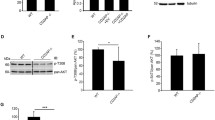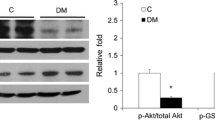Abstract
We previously reported that microsomal prostaglandin E synthase-1 (mPGES-1) contributed to adriamycin (Adr)-induced podocyte apoptosis. However, the molecular mechanism remains unclear. Here we studied the role of mPGES-1/PGE2 cascade in activating Stat3 signaling and the contribution of Stat3 in PGE2- and Adr-induced podocyte apoptosis. In murine podocytes, PGE2 dose- and time-dependently increased the phosphorylation of Stat3 in line with the enhanced cell apoptosis and reduced podocyte protein podocin. In agreement with the increased Stat3 phosphorylation, Stat3-derived cytokines including IL-6, IL-17, MCP-1, and ICAM-1 were significantly upregulated following PGE2 treatment. By application of a specific Stat3 inhibitor S3I-201, PGE2-induced podocyte apoptosis was largely abolished in parallel with a blockade of podocin reduction. Next, we observed that Adr treatment also enhanced p-Stat3 and activated mPGES-1/PGE2 cascade. Blockade of Stat3 by S3I-201 significantly ameliorated Adr-induced cell apoptosis and podocin reduction. More interestingly, silencing mPGES-1 in podocytes by mPGES-1 siRNA blocked Adr-induced increments of Stat-3 phosphorylation, PGE2 production, and Stat3-derived inflammatory cytokines. Taken together, this study suggested that mPGES-1-derived PGE2 could activate Stat3 signaling to promote podocyte apoptosis. Targeting mPGES-1/PGE2/Stat3 signaling might be a potential strategy for the treatment of podocytopathy.











Similar content being viewed by others
References
Inoue K, Ishibe S (2015) Podocyte endocytosis in the regulation of the glomerular filtration barrier. Am J Physiol Ren Physiol 309(5):F398–F405
Brahler S et al (2012) Intrinsic proinflammatory signaling in podocytes contributes to podocyte damage and prolonged proteinuria. Am J Physiol Ren Physiol 303(10):F1473–F1485
Ronconi E et al (2009) The role of podocyte damage in the pathogenesis of glomerulosclerosis and possible repair mechanisms. G Ital Nefrol 26(6):660–669
Anil Kumar P et al (2014) Molecular and cellular events mediating glomerular podocyte dysfunction and depletion in diabetes mellitus. Front Endocrinol 5:151
Herman-Edelstein M, Weinstein T, Gafter U (2013) TGFbeta1-dependent podocyte dysfunction. Curr Opin Nephrol Hypertens 22(1):93–99
Zhou L, Liu Y (2015) Wnt/beta-catenin signalling and podocyte dysfunction in proteinuric kidney disease. Nat Rev Nephrol 11(9):535–545
Yu J et al (2016) mPGES-1-derived PGE2 contributes to adriamycin-induced podocyte injury. Am J Physiol Ren Physiol 310(6):F492–F498
Forbes LR, Milner J, Haddad E (2016) Signal transducer and activator of transcription 3: a year in review. Curr Opin Hematol 23(1):23–27
Hillmer EJ et al (2016) STAT3 signaling in immunity. Cytokine Growth Factor Rev 31:1–15
O’Leary R et al (2016) Macrophage-derived IL-6 contributes to ANG II-mediated angiotensinogen stimulation in renal proximal tubular cells. Am J Physiol Ren Physiol 310(10):F1000–F1007
Peng J et al (2016) Renoprotective effects of ursolic acid on ischemia/reperfusioninduced acute kidney injury through oxidative stress, inflammation and the inhibition of STAT3 and NFkappaB activities. Mol Med Rep 14(4):3397–3402
Xiao Y et al (2014) Pentraxin 3 inhibits acute renal injury-induced interstitial fibrosis through suppression of IL-6/Stat3 pathway. Inflammation 37(5):1895–1901
Frias MA et al (2007) Prostaglandin E2 activates Stat3 in neonatal rat ventricular cardiomyocytes: a role in cardiac hypertrophy. Cardiovasc Res 73(1):57–65
Pang M et al (2010) A novel STAT3 inhibitor, S3I-201, attenuates renal interstitial fibroblast activation and interstitial fibrosis in obstructive nephropathy. Kidney Int 78(3):257–268
Seo HY et al (2016) Fyn deficiency attenuates renal fibrosis by inhibition of phospho-STAT3. Kidney Int 90:1285–1297
Zhang L et al (2015) Paclitaxel attenuates renal interstitial fibroblast activation and interstitial fibrosis by inhibiting STAT3 signaling. Drug Des Dev Ther 9:2139–2148
Asanuma K (2015) The role of podocyte injury in chronic kidney disease. Nihon Rinsho Meneki Gakkai Kaishi 38(1):26–36
Lal MA, Young KW, Andag U (2015) Targeting the podocyte to treat glomerular kidney disease. Drug Discov Today 20(10):1228–1234
Min KJ, Choi K, Kwon TK (2011) Withaferin A down-regulates lipopolysaccharide-induced cyclooxygenase-2 expression and PGE2 production through the inhibition of STAT1/3 activation in microglial cells. Int Immunopharmacol 11(8):1137–1142
Park JY, Pillinger MH, Abramson SB (2006) Prostaglandin E2 synthesis and secretion: the role of PGE2 synthases. Clin Immunol 119(3):229–240
Jia Z et al (2010) mPGES-1 deletion impairs aldosterone escape and enhances sodium appetite. Am J Physiol Ren Physiol 299(1):F155–F166
Samuelsson B, Morgenstern R, Jakobsson PJ (2007) Membrane prostaglandin E synthase-1: a novel therapeutic target. Pharmacol Rev 59(3):207–224
Lin L et al (2016) STAT3 as a potential therapeutic target in ALDH+ and CD44+/CD24+ stem cell-like pancreatic cancer cells. Int J Oncol 49:2265–2274
Ma JQ et al (2014) Ursolic acid ameliorates carbon tetrachloride-induced oxidative DNA damage and inflammation in mouse kidney by inhibiting the STAT3 and NF-kappaB activities. Int Immunopharmacol 21(2):389–395
Hamed MA, Ali SA, El-Rigal NS (2012) Therapeutic potential of ginger against renal injury induced by carbon tetrachloride in rats. Sci World J 2012:840421
Yamaji K et al (2008) Interleukin-6 production by peritoneal mesothelial cells and its regulation by inflammatory factors in rats administered carbon tetrachloride intraperitoneally. Toxicol Appl Pharmacol 226(1):38–45
Acknowledgements
This work was supported by Grants from the National Natural Science Foundation of China (Nos. 81600557, 81600532, 81600352, 81370802, 81300591, 81670647, and 81570616), the National Key Research and Development Program (No. 2016YFC0906103), and the Natural Science Foundation of Jiangsu Province (Nos. BK2012001, BK20160136, BK20160137). We thank Dr. Yue Zhang for her support on some experimental techniques.
Author information
Authors and Affiliations
Corresponding author
Ethics declarations
Conflict of interest
There is no conflict of interest to disclose.
Rights and permissions
About this article
Cite this article
Yu, J., Wu, Y., Wang, L. et al. mPGES-1-derived prostaglandin E2 stimulates Stat3 to promote podocyte apoptosis. Apoptosis 22, 1431–1440 (2017). https://doi.org/10.1007/s10495-017-1418-7
Published:
Issue Date:
DOI: https://doi.org/10.1007/s10495-017-1418-7




